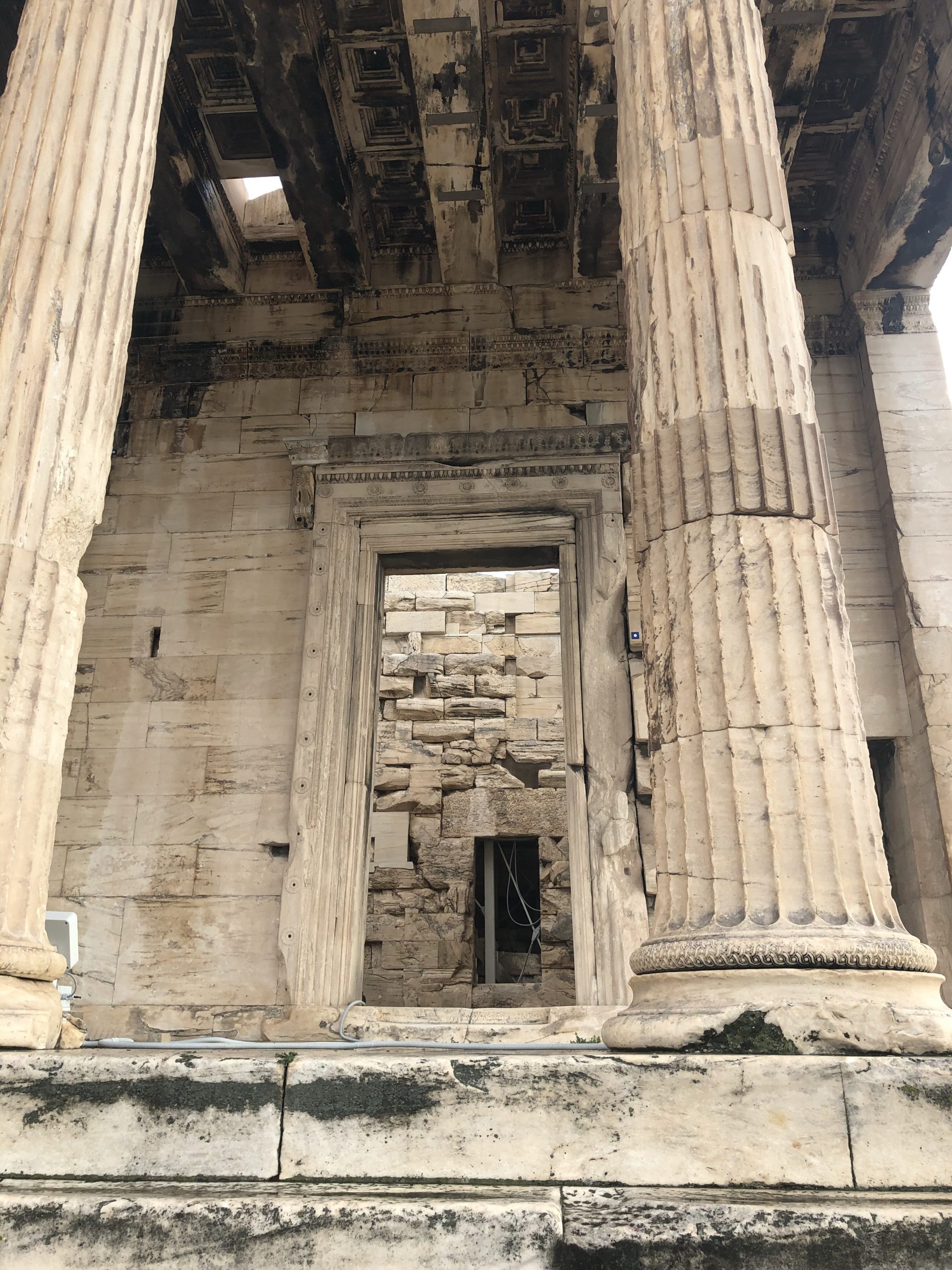Look at the buildings of an ancient Greek city and you cannot help but notice the references to Greek mythology are everywhere. As well as specific buildings for the veneration of local heroes, such as the Erechtheion on the Acropolis, there were temples to the gods, such as the temple of Apollo in Corinth. And then we are not talking the countless sculptures produced by Greek artists. But also in the history of a city, fact and fiction were all too often intertwined. Many poleis were founded by Greek gods, famous heroes or legendary kings. Foundation myths were of immense importance to the poleis and – as we have seen extensively in the past often used in diplomatic contacts with the outside world. But what are these are these foundation myths exactly?
After his sister Europa was abducted by Zeus, Cadmus, a Phoenician prince, sought her in vain throughout the Mediterranean. At a certain point heends up in Delphi where the Pythia advises him to Pythia advises him to give up his quest and follow a cow with a half-moon on its side. her side. At the place where this cow fell down exhausted, he was to found a new city. The city of Thebes was born. By the way, according to tradition Delphi itself was founded by the god Apollo on the place where he found the Python, a child of the Gaia, the earth goddess. To commemorate this epic battle, the god placed his own oracle here. Sparta had received its name from Sparte. She was the daughter of Lelex, a native of the region, who after her marriage to Lacedaemon, son of the nymph Taygete, controlled the region and founded the city of Sparta. Our source, the historian and geographer Pausanias, makes a clear distinction between these autochthonous figures and Dorians who lived there in his time (2nd century) (Paus 3.2.2.).
However different these foundation myths, one common element is striking. They are almost always figures who come from outside and found a new city in the region or were the ancestor or forefather of a new dynasty to rule over an existing polis. Most Greeks of the mainland considered themselves as descendants of foreigners. Thus, the inhabitants of Boeotia came to Greece some sixty years after the Trojan War and after the Mycenaean period most cities in the Peloponnese were ruled by descendants of the Herakles. These with their Doric companions took over many of the existing Greek cities during the Doric invasions. In fact, among foundation myths different kinds can be distinguished.
The first are the myths surrounding the so-called primordial figures. These myths are often created to give the names of cities, rivers or whole regions and generally remain rather vague. But sometimes figures like these are helped by the wisdom of an oracle or even divine intervention. A second kind are the ktiseis, these are myths about figures that form a specific link between the past and present. The inhabitants of a city could through these figures and their deeds be connected to mythological heroes such as Heracles. Mycenaean cities such as Argos, Thebes, Corinth and Sparta already existed during the Mycenaean period, but were refounded after the return of the Herakleids. The Dorians may have been a strange people, but
their kings and leaders were as descendants of Herakles had rightly returned to their heimat.
It is not surprising that in Greek foundation myths, it is often a foreigner who brings in change. The siple idea of foundation implies it and this can only happen if something is new or strange. If Kadmos had not set out from Phoenicia, he could never have founded Thebes. This idea is also reflected in the foundation of the Greek colonies in Asia Minor and in Magnae Graeca, where the Greek colonists emphasised their collective Greek by presenting their founders as local heroes. Eventually creating a whole tradition of myths and stories to fit these figures into Greek mythology. This way, they too could invoke these ties of kinship in diplomatic contacts with other poleis. The creation of these new traditions sometimes causes confusion, not only for us as modern reader, but also for the classical authors. But more on that next time.


 This is already the ninth post in a series of twelve which dives into the ways in which the ancient Greeks used their mythological past as a diplomatic tool in their relationships with others. This series is written in collaboration with
This is already the ninth post in a series of twelve which dives into the ways in which the ancient Greeks used their mythological past as a diplomatic tool in their relationships with others. This series is written in collaboration with 

